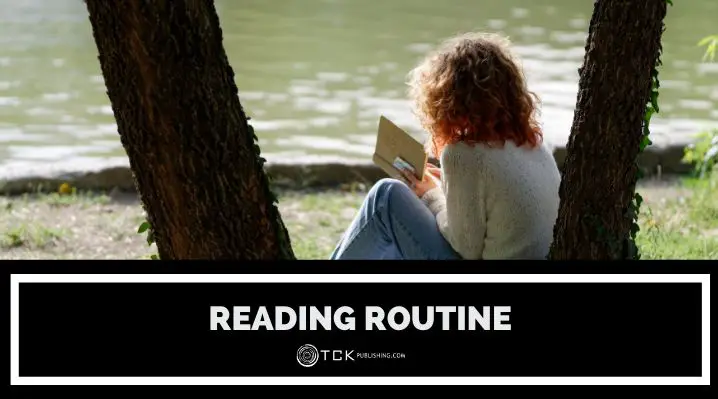
When was the last time you lost yourself in a good book? For many people, reading has become a luxury they can’t seem to find time for. But between work, chores, and constant phone pings, reading often takes a backseat. Sound familiar?
The good news is that anyone can build a reading routine that sticks. You just need the right approach and a little consistency.
Understanding Reading Routines
A reading routine is a simple, consistent pattern of reading you stick with over time. It’s not about plowing through a pile of books or copying someone else’s schedule.
It’s about creating a sustainable practice that works for you. No need for overcomplicated systems that take more energy than the reading itself.
Just as you might exercise regularly or drink water throughout the day, a reading routine means making books a part of your daily life.
The secret? Consistency. When you read regularly—even just 10 minutes a day—your brain starts to expect it. Reading gets easier, feels more natural, and becomes something you don’t want to skip.
Why It’s So Hard to Stick to a Reading Habit
Let’s be honest—life gets busy. And reading doesn’t give you the same instant reward that scrolling TikTok or binge-watching a show does. That’s why many people fall out of the habit.
Reading takes focus. And every ping, buzz, or banner pulls your brain in a different direction. Even five minutes of reading can feel like a chore when your attention is split.
Add to that the pressure to finish “important” books, packed schedules, and plain old fatigue—and suddenly reading slides to the bottom of your to-do list.
But the issue usually isn’t time. It’s attention. And the good news? You can train your brain to focus again.
How to Build a Reading Routine That Lasts
Ready to make reading a regular part of your life? Start here:
Start Small and Stay Consistent
Don’t aim for an hour a day if you’re barely reading now. Start with 10 minutes. That’s it. Set a timer, open your book, and read. Even one page is a win. It’s not about quantity. It’s about showing up.
Set specific goals like “I’ll read for 10 minutes before bed” rather than vague ones like “I’ll read more.” Being specific makes your goal actionable and measurable.
Attach It to an Existing Habit
Connect reading to something you already do every day. Read right after your morning coffee. Or just before bed. This technique, called habit stacking, uses existing routines as triggers for new habits.
Pick a Time and Place
Pick a cozy spot for reading—your couch, a favorite chair, even a quiet corner. Add good lighting and keep distractions low. Turn it into a space you actually want to spend time in.
Leave your book there and choose a regular time to read. Over time, your brain will start to associate that spot with reading, making it easier to slip into the habit.
Digital Detox
To read deeply, you need to cut down digital distractions. Try switching your phone to airplane mode or “Do Not Disturb” while you read. Better yet, leave it in another room.
You can also use a dedicated e-reader like a Kindle, which keeps social media out of reach. The goal is to create a space where your brain can focus fully on the page.
Mix Up Formats
Books don’t always have to mean paper. Try audiobooks during your commute. Use an e-reader in bed. Keep a physical book on your nightstand. Different formats give you flexibility and help you read more often.
Track Your Progress (But Don’t Obsess)
You can use a notebook, Goodreads, a reading app, or even sticky notes. Tracking what you read keeps you motivated.
But don’t turn it into pressure. This is to see your progress in data, not to impress or compete with anyone.
Choose Books You Actually Want to Read
Forget what you “should” read. Pick what excites you. If you love thrillers, read thrillers. If you prefer short stories or graphic novels, go for those.
Be willing to let go of books you don’t like. Not every book is for you. Drop the guilt and move on to something better.
Make it Social
Join a book club. Follow reading accounts on social media. Chat about books with friends. Reading becomes easier (and more fun) when it feels like a shared experience.
The Benefits of a Consistent Reading Practice
Making time for books pays off in more ways than you’d think. Reading sharpens focus, builds vocabulary, and strengthens critical thinking. Unlike the quick scroll of social media, it trains your brain to stay present and engaged.
It’s also a powerful tool for mental health. Studies show reading can cut stress by up to 68%, and fiction helps you build empathy by stepping into someone else’s shoes.
Whether you’re into novels or nonfiction, reading fills you with fresh ideas, insights, and knowledge. In the long term, regular readers often write better, speak more clearly, and carry a wider range of knowledge to any job or creative pursuit.
You don’t need a complicated plan or hours of free time to read more. Just small, steady moments with the right book. Build the habit one page at a time—and enjoy the process as you go.
What’s your current reading routine? Share your thoughts below!
If you enjoyed this post, then you might also like:
- Booktubers to Feed Your Reading Habit
- 17 Best Book Subscription Boxes to Fuel Your Reading Habit
- How to Adopt the Reading Habits of Successful People
- How to Enjoy Reading: 8 Tips for a Better Reading Experience

Cole is a blog writer and aspiring novelist. He has a degree in Communications and is an advocate of media and information literacy and responsible media practices. Aside from his interest in technology, crafts, and food, he’s also your typical science fiction and fantasy junkie, spending most of his free time reading through an ever-growing to-be-read list. It’s either that or procrastinating over actually writing his book. Wish him luck!
